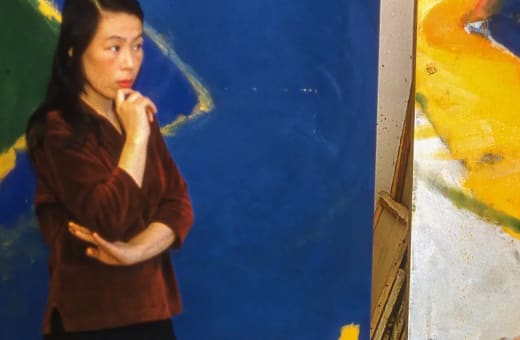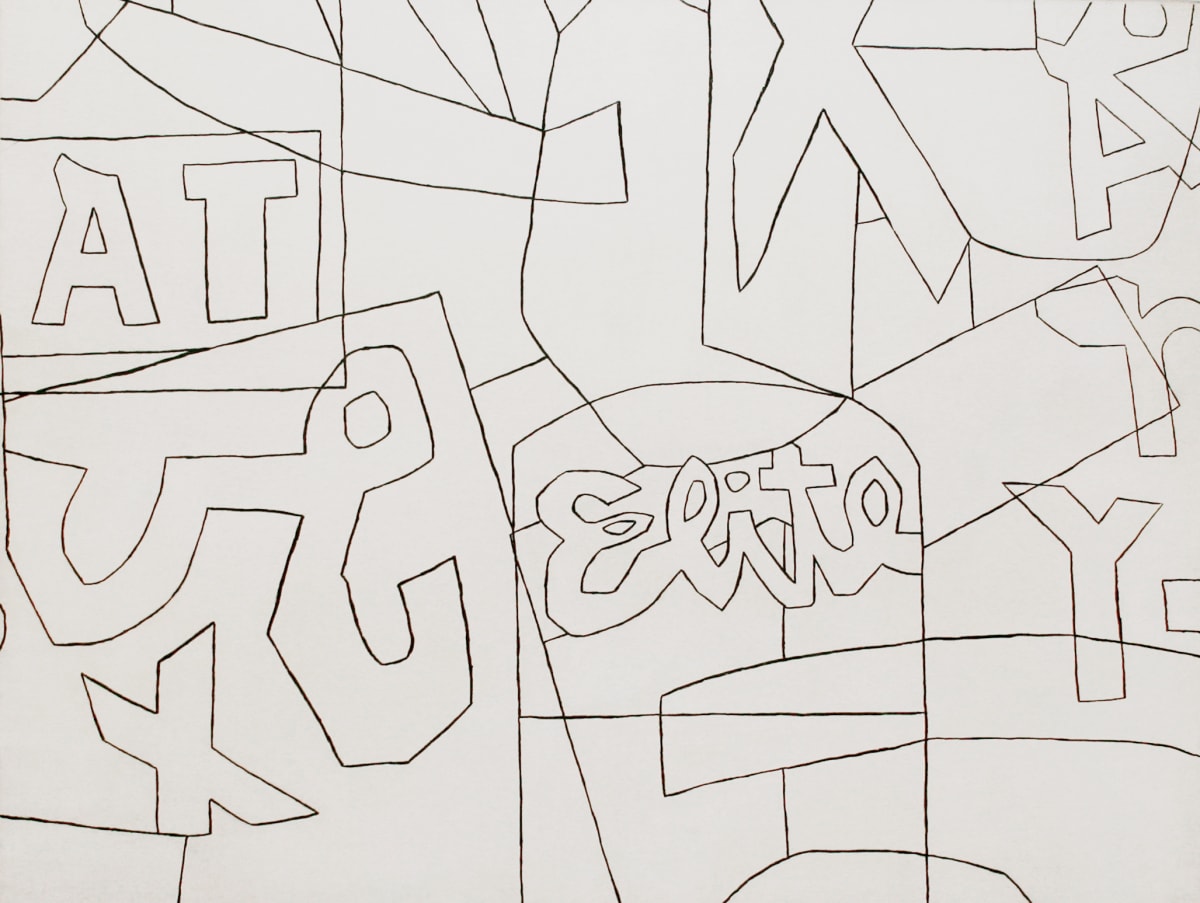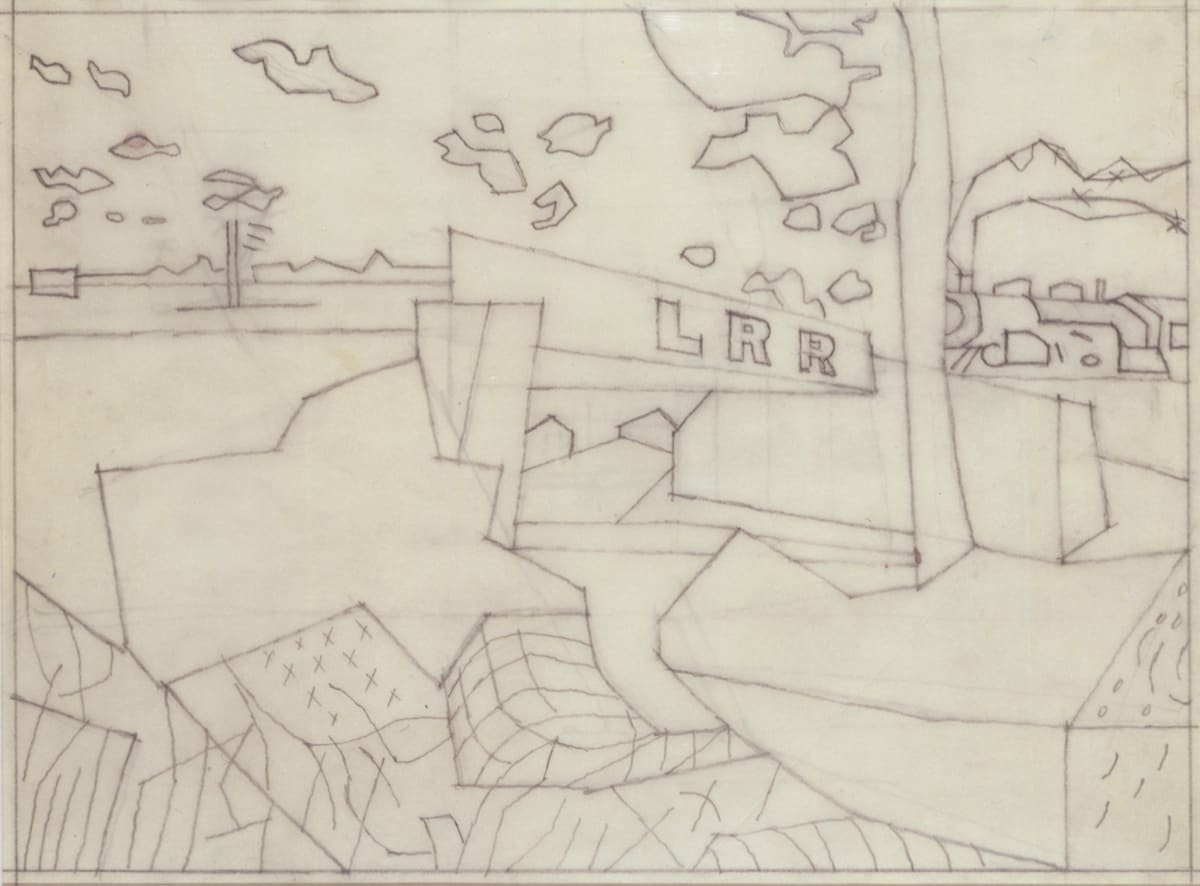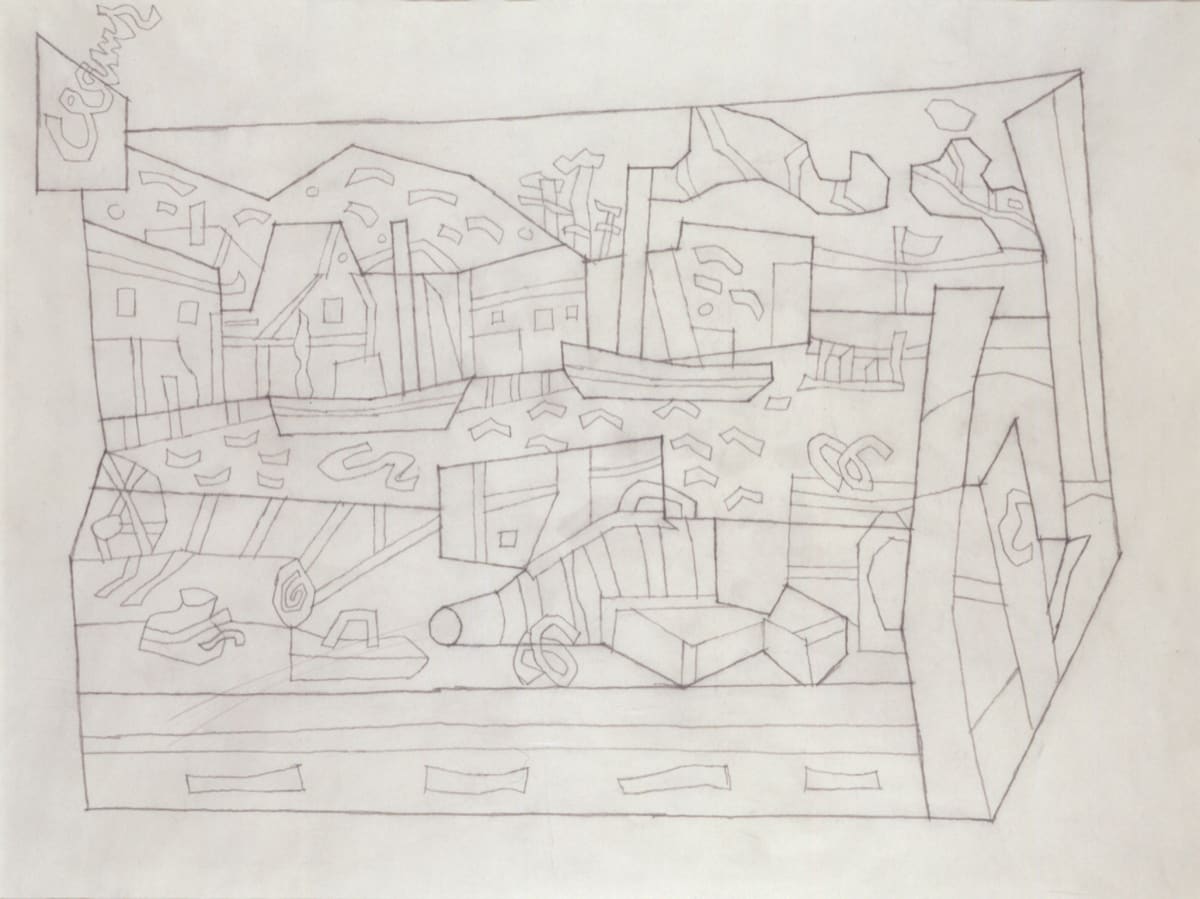
This important exhibition will offer a compelling opportunity to study Davis’s drawings and to understand this critical portion of his oeuvre in a larger context.
Hollis Taggart Galleries is pleased to announce “Dynamic Impulse: The Drawings of Stuart Davis” an exhibition of approximately sixty works that will examine the artist’s drawings from as early as 1909 to the year of the artists death in 1964. This important exhibition will offer a compelling opportunity to study Davis’s drawings and to understand this critical portion of his oeuvre in a larger context. Davis (1892–1964), who considered drawing and painting synonymous and believed color simply reinforced the spaces he delineated in his drawing, produced a powerful and original art that responded to the experience of the twentieth century. For more than five decades his bold colors and syncopated rhythms conveyed the rapid pulse of modern life. Like the jazz music he loved, his art is hot and cool—energetic and lively, as well as quietly distilled—but always sophisticated.
Hollis Taggart Galleries is pleased to announce “Dynamic Impulse: The Drawings of Stuart Davis” an exhibition of approximately sixty works that will examine the artist’s drawings from as early as 1909 to the year of the artists death in 1964. This important exhibition will offer a compelling opportunity to study Davis’s drawings and to understand this critical portion of his oeuvre in a larger context. Davis (1892–1964), who considered drawing and painting synonymous and believed color simply reinforced the spaces he delineated in his drawing, produced a powerful and original art that responded to the experience of the twentieth century. For more than five decades his bold colors and syncopated rhythms conveyed the rapid pulse of modern life. Like the jazz music he loved, his art is hot and cool—energetic and lively, as well as quietly distilled—but always sophisticated.
A retrospective look at Davis’s drawings, including sketches, doodles, diagrams, preparatory studies, finished drawings, and black and white linear versions of paintings, provides a comprehensive view of his career. From his early cartoons and illustrations for The Masses, through his engagement with European Modernism, to the development of his own brand of Cubism, drawing was the backbone of Davis’s artistic practice. It was his means of investigating and picturing the world and a method for working out his art theory. By recycling, embellishing or distilling the original motifs, Davis’s drawings also became vital materials for making new art.
“Dynamic Impulse” will examine the broad range of sources that were driving forces in Davis’s creative process. Devoutly committed to the concept of the American scene, Davis fervently believed that the ever-changing experience of modern life offered substantive subjects for his work. He took his cues form the vibrant urban landscape, booming popular culture, the docks of Gloucester, and the rhythms and melodies of jazz music. The world around him fostered and sustained Davis’s art throughout his career, creating continuity in the form and content of his works that spanned from the turn of the century through the sixties.
Davis’s continuous probing of America’s multifaceted vernacular and material culture infuses his earliest and most mature drawings. In both the very early J. J. McSherry, 1909, and the circa 1964 Design for Postage Stamp Davis uses a comic strip format and incorporates the words (“Bang” and “Pow!”) as formal design elements to convey ideas about physical and visual impact. In the middle of his career, he turned to consumer goods from the drug and hardware stores—a pack of cigarettes, matchbooks, a coffee percolator and an eggbeater—as starting points for several highly abstracted drawings. In Study for “Egg Beater No. 1,” 1927, the planes intersect and form a more cohesive dimensional object, while in Drawing for “Percolator” ofthe same year, forms are arranged vertically; untethered, they appear to float freely in an indeterminate space. Words and shapes are united in his later Untitled (Black and White Variation on “Pochade,”) 1956-58, where the form and composition are again inspired by mass culture, resulting in Davis’s unique version of pop art.
A keen observer of both urban experience and rural life, Davis approached the American landscape both in the styles of Ashcan realism and formalist abstraction. As highlighted by his first published illustration for The Masses in 1913, At the Metropolitan Museum of Art and his sketch of a New Jersey saloon Negro Dance Hall, 1915, Davis was an adept caricaturist and a keen observer of social behavior. Complementing and contrasting these sketches,during the 1930s Davis pictured Gloucester in an abstract vocabulary. He filled a number of sketchbooks with drawings of the wharves and the activities of the working harbor, reducing these views to their most essential forms and structures. The town proved a rich source of inspiration and material for Davis throughout his career with some of these sketched motifs becoming sources for later works and aiding him in the continuing formulation of his art theory.
Late in his career Davis adopted an even more sophisticated distillation process of previous ideas. For example Untitled (Black and White Variation on “Pochade”), is an enlarged detail from the lower central portion of the related oil painting, Pochade. This work is several generations removed from the original “ancestor,” a small 1922 oil, Composition with “Any” which, turned upside down, became the basis for Cliché, 1955. A related gouache, Detail Study for “Cliché,” 1955,became the basis for a color lithograph, a mirror image of the painting, which Davis turned upside down to make the Pochade series. Such innovations, as explored through the breath of work featured in this exhibition, expose Davis as a true generator of ideas and images with an electric creativity that animated his art from start to finish. From “Bang” to “Pow!” he was continually compelled to observe, transform, and comment on his environment. It was this very impulse that kept him charged.
A fully illustrated catalogue with an essay by Mary Birmingham, Director of Exhibitions at the Hunterdon Museum of Art in Clinton, New Jersey will accompany the exhibition. Birmingham has had a long and varied career working at the Whitney Museum of American Art and the Montclair Art Museum and as an independent curator and writer. She is co-author of Montclair Art Museum: Selected Works, published by Rutgers University Press in 2002. She has written and lectured on a variety of topics in modern and contemporary art, and has been a regular arts contributor to The Jersey Journal.
This exhibition celebrates the publication of Stuart Davis: A Catalogue Raisonné, edited by Ani Boyajian and Mark Rutkoski and with essays by William C. Agee and Karen Wilkin, available through Yale University Press.













